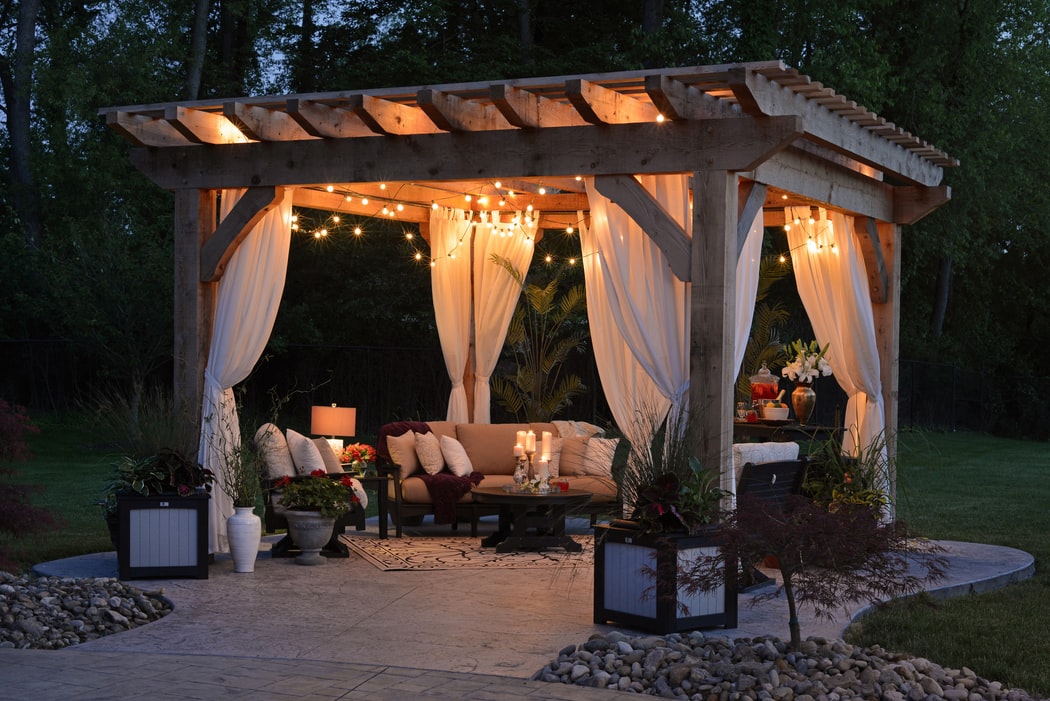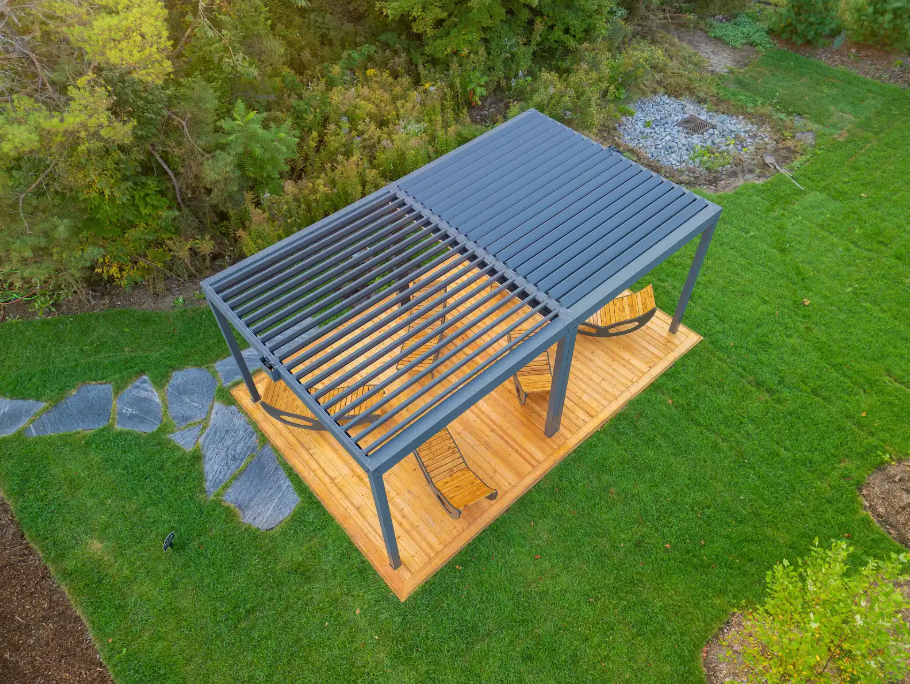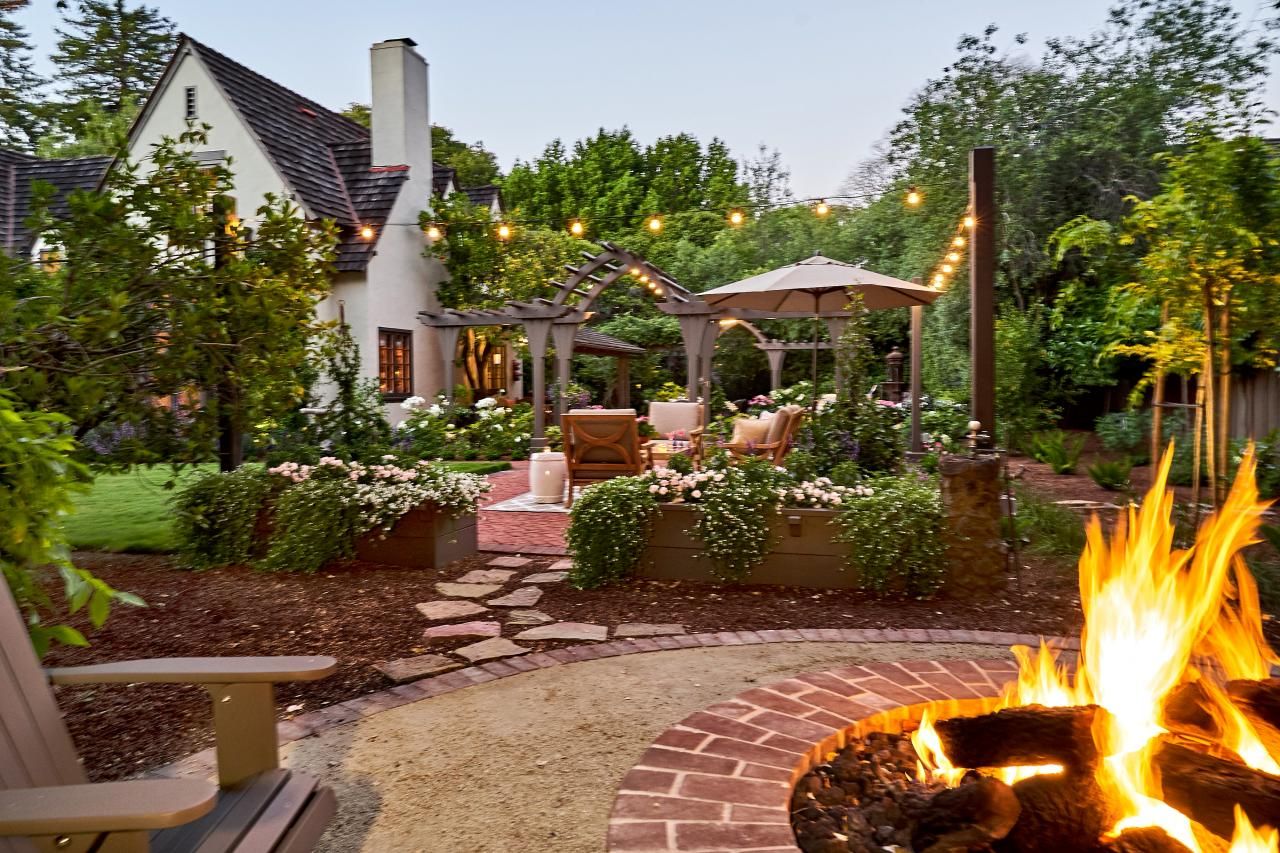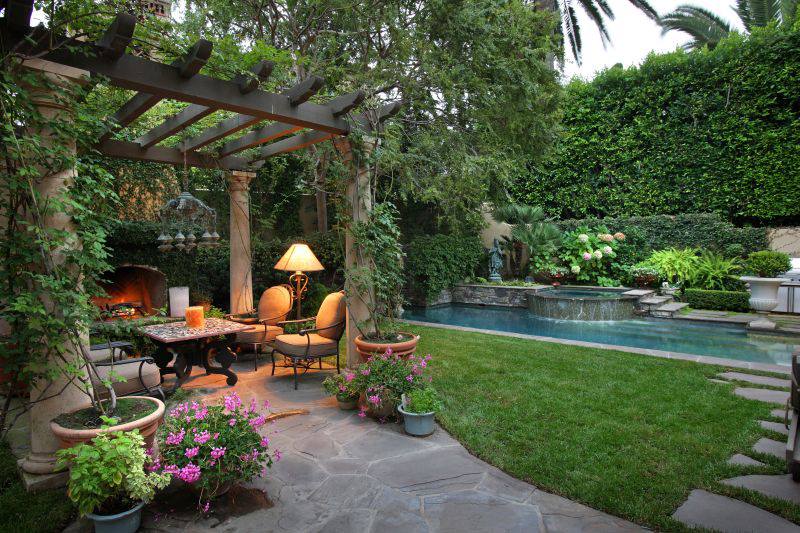The Ultimate Guide to Pergolas

Pergolas are gaining growing popularity in modern landscape design – light, tasteful structures that become the center of homey atmosphere in the garden!
They unite not only beauty, but also homeyness in fresh air. Pergolas are used not only to adorn terraces, garden areas, but also to provide shades close to pools or patios. Their adaptability, minimal maintenance and elegant appearance have ensured that they are among the top elements of 21st-century landscape architecture.
What Is a Pergola?
A pergola is an open structure of a building composed of upright posts supporting horizontal beams. The roof could either be a lattice or a solid ceiling, depending on the functional purpose and design taste. The main purpose of a pergola is to create an area of shade for leisure, protected from sunbeams, and in some cases – rain or wind.
Traditionally, pergolas were made of wood, but the modern market has plenty to select from: aluminum, steel, composite, PVC, and their combinations. Wooden pergolas beckon with naturalness and warmth, aluminum – with strength and lightness, and composite – with weather resistance and minimum needs for maintenance. Previously, pergolas served mainly as supports for climbing plants in the garden. Nowadays, they are an entire architectural element that combines functionality and aesthetics.
Types of Pergolas
Modern-day pergolas come in a range of types, and each has its peculiarities:
- Traditional pergolas – the most common type, usually built from wood or metal. It is open or half-shaded, typically employed as a shaded area near the house or within the garden area.
- Louvered pergolas – have adjustable slats on the roof, so you can change the tilt angle to control the degree of light and air. It’s a clever solution that adapts to different weather conditions.
- Motorized pergolas – possess an automated management system, because of which you can either open or close the roof via a remote control or an application from your smartphone. These models tend to include LED lighting, wind and rain sensors, and heating facilities.
- Folding pergolas – simple pergolas that can be easily fixed and dismantled. They are ideal for temporary events or season use, such as at picnics or in the summer restaurant terraces.
Why Put Up a Pergola?
It has a number of functional and aesthetic advantages to put in a pergola. First, it creates a cozy outdoor sanctuary, providing relief from the scorching sun, random rain or wind. Second, the pergola is a natural extension of indoor space, bringing in a new “room” to the outdoors.
Pergolas are also an excellent base of the landscape: climbing flowers such as grapes, clematis or roses can create a natural green curtain. In addition, modern pergolas can easily be integrated with lighting, furniture, fabrics, turning a typical courtyard into a fashionable lounge.
From a monetary perspective, having a pergola is likely to make a real estate property very valuable. It gives functionality and dignity to the space near the house, which is crucial during selling or renting of homes.
Design & Placement Tips
In order for the pergola to harmoniously fit into your landscape, it is important to choose the right location for it. Most often it is installed near the house, near the pool or in the garden. The orientation of the pergola should take into account the movement of the sun – this will allow for the most effective use of natural light and shade.
As crucial is the decision on what materials and color of the building to use based on the style of the house as well as the terrain. Like, for example, metal or composite pergolas with soft colors for modern homes, and wood designs in a natural finish for country cottages.
Also consider supplementing the pergola with decorative details: curtains, garlands, hanging chairs or flowerpots – all this will help make a unique place of rest.
A pergola is not simply a shaded structure. It combines functionality, beauty and individual taste. Because of the variety of materials, forms and technical solutions, each can choose a pergola that will be perfectly adapted to their land and needs.
When selecting a pergola, one should not just think about the appearance, but also about the quality of materials, ease of maintenance and potential for future updates. If you need to receive a quality solution with a warranty on quality, turn to LOUSOL – a firm specializing in the production and installation of pergolas, adhering to all contemporary standards and customer demands. With LOUSOL, your territory will become extraordinary.







